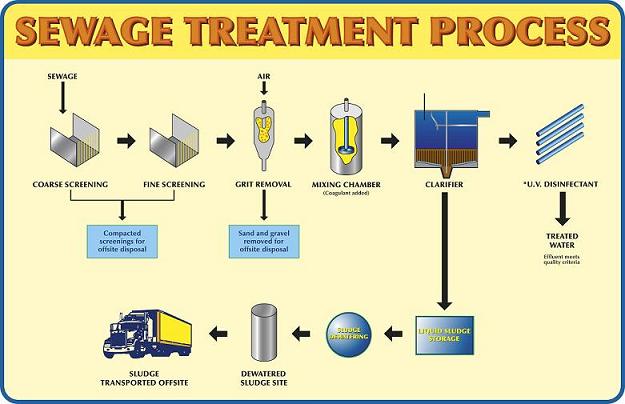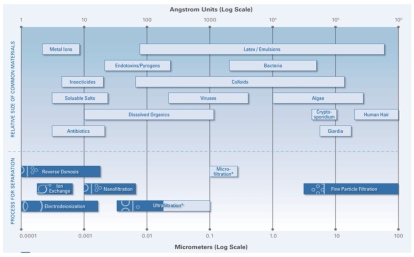A Biased View of Residential Water Treatment System
Table of Contents3 Simple Techniques For Residential Water Treatment SystemThe smart Trick of Residential Water Treatment System That Nobody is Talking AboutFascination About Residential Water Treatment SystemFacts About Residential Water Treatment System Revealed

on the various other hand, originates from production, industrial and commercial tasks brought and has an entirely various make-up than sewage water. Exactly how does it function? The initial action in this water therapy plant is that the wastewater drains to the plant with the aid of gravity via the major sewer system.
In this stage, the water moves with the gravel chamber to eliminate any kind of grit. The water then moves to the bar screens which remove large items.
In this stage, the water streams to the primary settling storage tanks, likewise recognized as pre-settling basins. These storage tanks have hoppers which are positioned in the base of the container where water streams with.
The 7-Second Trick For Residential Water Treatment System
These settling containers enable the sludge to settle and also then relocates to food digestion tanks. In the food digestion tanks, the sludge is warmed as well as mixed. One more vital point that occurs right here is the production of biogas, which the wastewater treatment plants can reuse, in the manufacturing of electric or thermal energy which is another massive benefit to the setting.

The last action in wastewater therapy is evaluation. This inspection includes checking the contamination degree of the water treated and also seeing to it it abides by the highest possible standards in order to be released or recycled for domestic or industrial objectives. residential water treatment system. Applications: Most petroleum refineries or petrochemical as well as chemical industries produce a large quantity of wastewater as well as call for on-site wastewater therapy plants.
The wastewater right here moves through displays as well as right into settlement see this basins that can secure particles in big amounts. It serves as a pre-treatment as mentioned above as it happens before 3 more hostile stages- key, second and tertiary therapy. Main Therapy Throughout this stage, the wastewater moves right into the clarifiers.
The 25-Second Trick For Residential Water Treatment System
It is the design of these containers that cause settling, that is, the natural solid matter gathers at the end of the storage tank while the lighter matter drifts to the leading coming to be easier for elimination. The raw material that settles near the bottom is referred to as a main sludge blanket.
Secondary Treatment This treatment stage consists of aerobic oygenation. When this air streams via the aerators, the little holes existing, transform them right into bubbles as well as they get mixed with the water column.
This RAS returns into the key clarification storage tank and also the microorganisms in it assists in breaking down any type of raw material in the sewage. As soon as RAS has entirely experienced both the key and also secondary explanation basins continuously, i. e numerous times, it is become waste-activated sludge (WAS). The WAS after that does not return to the key clarification storage tank however rather transfers to the covered tanks, likewise understood as cardiovascular sludge digesters.
The remaining sludge steps to the dewatering facility that has dewatering storage tanks where the plant makes use of belt presses to squeeze any type of continuing to be water out of the sludge. Tertiary Therapy Tertiary therapy adheres to the procedure of both main as well as additional processes however additionally furthermore includes mechanical as well as photochemical processes.
The Best Guide To Residential Water Treatment System
The purpose of this is to get rid of as much solid physical issues as feasible prior to sending the effluent for more treatment. Below chemicals are included to damage down any click here to find out more type of solid and also chemical waste.
There are 2 kinds of resins- one is an anion one while the other Click Here is a cation one. These former materials launch hydroxyl ions which are adversely billed while the cation materials release hydrogen ions that are positively charged. The cation-exchange materials bring about softening of water, the anion-exchange lead to the elimination of nitrate from wastewater and the mix of both the anion and also cation exchange removes virtually every ionic impurity present in the feed water with a procedure called deionization (residential water treatment system).
Applications: Demineralization causes the complete removal of minerals from the water as well as is typically used in sectors that call for water with high levels of pureness, for instance- makeup or feed water in high-pressure boilers, the food and drink sector, and procedure streams used in the production of electronics. They are also utilized in industries for the generation of vapor, power and also cooling.
Reverse Osmosis (RO) Water Therapy The principle of reverse osmosis (RO) functions on the purification approach that leads to the elimination of a multitude of pollutants and also impurities from wastewater by applying pressure to it when it is on one side of a membrane layer. How does it work? This water therapy plant functions by utilizing a high-pressure pump that boosts the pressure on the salt side of the RO as well as forces the water throughout the semipermeable RO membrane layer (which enables some atoms and also molecules to pass but not others), leaving almost 95%-99% of liquified salts in the deny stream.